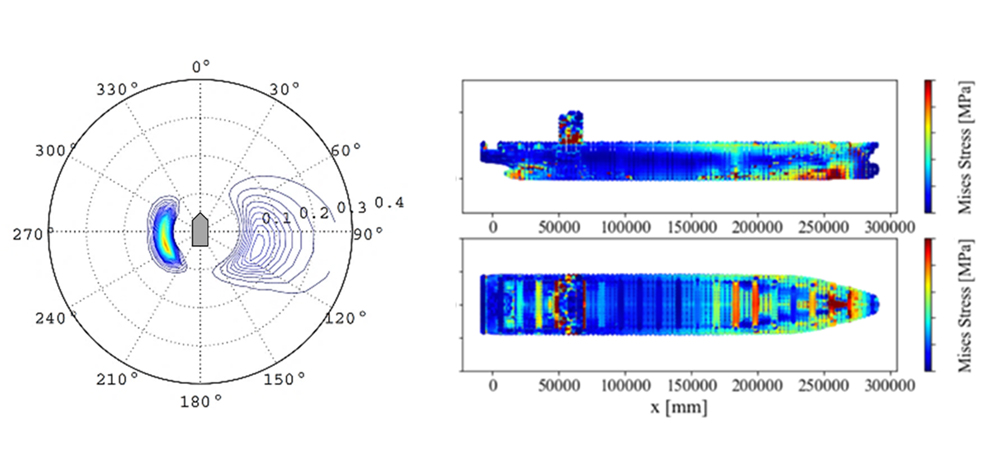Outcome of “Study on Monitoring the Structural Health of Vessel Hulls for Very Large Containerships” Adopted by ClassNK Guidelines
The outcome of “Study on monitoring the structural health of vessel hulls for very large containerships,” jointly conducted by MTI, NYK Line, and Nihon Shipyard Co., Ltd. (NSY) as a support project of i-Shipping1 promoted by the Ministry of Land, Infrastructure, Transport and Tourism, have been adopted by ClassNK in Guidelines for Hull Monitoring.
In the joint study, National Maritime Research Institute (NMRI), Yokohama National University (YNU), Japan Weather Association (JWA) and the University of Tokyo (UTokyo) participated as research partners.
1. Background
In recent years, as ships have been getting bigger, the interest in safe operation and environmental protection has grown as well; so, it has been required to establish an advanced evaluation of hull structural strength and technology that aids navigational judgement considering the effects of metocean conditions, maneuvering, and such in actual sea.
This study aimed at system development that can support safe ship operation by collecting the data on such forces affecting hull structure during voyages and analyzing it together with navigation records.
2. Outline of the Joint Study
In the joint study we have developed a hull-structure-monitoring system that utilizes stress-measuring sensors placed in various parts of the hull and thereby collects data on the forces caused by waves that affect hull structure. For the system development, we conducted: (1) collecting data in actual sea, (2) development of a hull-stress estimating method, (3) development of a cumulative-fatigue-damage estimation method, and (4) user-oriented system development.
1) Collecting data in actual sea (JWA, MTI)
Collected operational and metocean data of targeted containerships and confirmed measured stress data and external forces due to sea weather. In addition, compared radar wave gauge and wave hindcast data.
2) Development of the hull-stress estimation method (NSY, YNU and, UTokyo)
Grasped characteristics of whipping response in actual sea and developed estimation technology of directional wave spectrum utilizing hull-stress monitoring results. Also, conducted inverse estimation of stress based on strain data using iFEM.
3) Development of the cumulative-fatigue-damage estimation method (NMRI)
Calculated and compared cumulative fatigue damage of measured data on actual ships and calculated how longitudinal bending vibration affects fatigue damage.
As a result, we have developed methods that can estimate and evaluate the sea conditions that ships will encounter and hull stress and cumulative fatigue, and thus support safe vessel operation that utilizes these added features in a fuller analysis of navigational data that include ship speed, draft, propeller rotation, and loading condition.

Estimation of sea conditions that ships will encounter (left) and estimation results of hull stress (right)
3. Outcome of Joint Study
Technical requirements for the hull-structure-monitoring system and the method, which have been gained in this study, have been adopted by ClassNK in Guidelines for Hull Monitoring.
The guidelines consist of the main part that provides technical requirements and inspection procedures for equipment in a structure-monitoring system and an entire system. Appendix A related to the functions of fatigue-strength evaluation for hulls, such as this evaluation method, and Appendix B related to functions for data utilization for supposing maneuvering.
1 i-Shipping: A project launched mainly by Japan’s Ministry of Land, Infrastructure, Transport and Tourism (MLIT) in response to rising expectations for the advanced safety of vessels that utilize IoT in the shipping industry.

